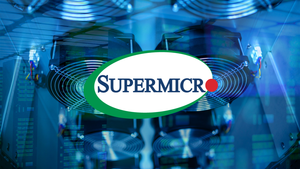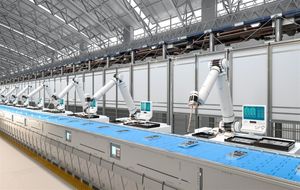
A new era of computing is dawning, one that promises to fundamentally alter how we process information and interact with technology. At the forefront of this transformation is neuromorphic computing, an emerging field dedicated to designing computer chips that mimic the human brain's neural structures and processing methods. This revolutionary approach aims to overcome the limitations of traditional computing by delivering unprecedented energy efficiency and computational power, particularly for complex tasks requiring real-time learning, adaptation, and pattern recognition.
The immediate implications of this technology are profound. By moving beyond the conventional von Neumann architecture, which separates processing and memory, neuromorphic systems can handle vast amounts of data with significantly less energy consumption and far greater speed. This paradigm shift holds immense potential to unlock advanced capabilities in critical sectors such as autonomous vehicles and personalized healthcare, paving the way for truly intelligent and responsive systems that can learn and evolve.
Mimicking the Mind: How Neuromorphic Computing Works and Why It Matters
Neuromorphic computing represents a radical departure from traditional silicon-based processors. Instead of relying on a continuous clock-based system and sequential instruction execution, neuromorphic chips are built around artificial neurons and synapses, mirroring the brain's highly parallel and event-driven architecture. Key to this design are Spiking Neural Networks (SNNs), which communicate using discrete electrical "spikes" – much like biological neurons – only activating and consuming power when an event occurs or input is received. This event-driven processing is a critical differentiator, enabling vastly superior energy efficiency compared to conventional processors that continuously consume power.
Furthermore, neuromorphic systems tackle the notorious "von Neumann bottleneck" by co-locating processing and memory within individual artificial neurons. This integration drastically reduces the constant data transfer between separate CPU and memory units, leading to lower latency and swifter computation. The concept of neuromorphic engineering first emerged in the 1980s, with pioneers like Misha Mahowald and Carver Mead laying the groundwork for this brain-inspired approach. Today, this foundational research is culminating in practical applications, promising to accelerate AI development, enhance real-time decision-making, and enable devices to learn and adapt continuously in dynamic environments.
The importance of this technology cannot be overstated. With the increasing demand for AI and machine learning capabilities, traditional computing architectures are struggling to keep pace, particularly concerning power consumption. Neuromorphic computing offers a viable solution to this energy crisis, allowing for powerful AI to be deployed at the edge – closer to the data source – in devices with limited power budgets, from wearable health monitors to autonomous drones. Its ability to learn in real-time and adapt to novel problems makes it ideal for scenarios where continuous learning and quick responses are paramount, from improving diagnostic accuracy in medicine to enhancing safety in self-driving cars.
Market Shake-Up: Who Wins and Who Loses in the Neuromorphic Race
The advent of neuromorphic computing is set to trigger a significant realignment within the technology market, creating new leaders and challenging established players. Companies that have heavily invested in this nascent field stand to gain substantial competitive advantages. Intel Corporation (NASDAQ: INTC), with its Loihi and Loihi 2 chips and the large-scale Hala Point research system, is a prime example of a technology giant making rapid progress. Similarly, IBM (NYSE: IBM) has been a trailblazer with its TrueNorth chip and its successor, NorthPole, focusing on energy and space efficiency for cognitive workloads.
Beyond these giants, several innovative companies are poised to capture significant market share. BrainChip Holdings Ltd (ASX: BRN) offers its Akida neuromorphic processor, specifically designed for low-power edge AI applications. Samsung Electronics Co., Ltd. (KRX: 005930) is actively integrating neuromorphic chip technology into various devices, while Qualcomm Technologies, Inc. (NASDAQ: QCOM) is pushing boundaries in edge computing with chips designed to process AI tasks closer to the data source. Specialized startups like SynSense (formerly aiCTX), Innatera, Blumind, Neurobus, Vivum Computing, Grayscale AI, and Prophesee are also developing cutting-edge solutions for specific applications like vision sensors and ultra-low-power processing. Even Sony Corporation (NYSE: SONY) is among the major players in this evolving market.
Conversely, companies heavily invested solely in traditional computing architectures, particularly those that do not adapt or integrate neuromorphic capabilities, risk losing market relevance. Manufacturers of conventional high-power AI processors may see their market share erode as industries seek more energy-efficient and adaptable solutions. The shift towards event-driven, co-located processing will necessitate significant R&D investments and strategic pivots for many in the semiconductor industry. Those unable to innovate or acquire neuromorphic expertise could find themselves at a disadvantage in a market increasingly prioritizing real-time learning and low-power AI at the edge.
Broader Implications: A New Era for AI and Beyond
The implications of neuromorphic computing extend far beyond individual companies, promising to reshape entire industries and societal interactions. This technology perfectly aligns with the broader industry trends of Edge AI and the Internet of Things (IoT), where processing data closer to its source is crucial for reducing latency, conserving bandwidth, and ensuring privacy. Neuromorphic chips, with their low power consumption and event-driven nature, are ideal for powering the billions of sensors and devices that form the backbone of the IoT, enabling sophisticated on-device intelligence without constant cloud connectivity.
The ripple effects will be felt across the computing landscape. Traditional data centers, which consume enormous amounts of energy, could see a reduction in workload as more processing shifts to edge devices. This could lead to a more distributed and resilient computing infrastructure. In cybersecurity, neuromorphic systems' ability to rapidly detect unusual patterns makes them powerful tools for identifying and thwarting cyberattacks in real-time, offering a new layer of defense against evolving threats. Moreover, neuromorphic computing is poised to act as a significant accelerator for artificial intelligence, boosting high-performance computing and serving as a fundamental building block for future advancements in AI, potentially even artificial superintelligence.
From a regulatory and policy perspective, the proliferation of intelligent, adaptive edge devices raises new questions about data privacy, algorithmic bias, and the ethical deployment of autonomous systems. As neuromorphic-powered devices become more pervasive in critical applications like healthcare and transportation, robust regulatory frameworks will be essential to ensure safety, accountability, and public trust. Historically, every major computing paradigm shift – from mainframes to personal computers to cloud computing – has brought similar challenges and opportunities, and neuromorphic computing is no exception, promising a transformative yet complex journey ahead.
What to Watch Next: The Road Ahead for Neuromorphic Computing
The journey for neuromorphic computing is still in its early stages, but the pace of development is accelerating. In the short term, we can expect to see continued breakthroughs in chip design, with increased density of artificial neurons and synapses, and improved algorithms for spiking neural networks. The focus will remain on refining energy efficiency and enhancing the real-time learning capabilities of these systems. Strategic partnerships between hardware manufacturers, AI developers, and industry-specific application providers will be crucial for integrating this technology into viable commercial products.
Longer term, the widespread commercialization and adoption of neuromorphic computing will depend on several factors, including cost reduction, standardization of programming models, and the development of a robust ecosystem of tools and talent. We should pay close attention to the progress in specific application areas like autonomous vehicles, where breakthroughs in real-time sensory processing and decision-making could rapidly accelerate deployment. In personalized healthcare, advancements in wearable diagnostics and intelligent prosthetics powered by neuromorphic chips will be key indicators of progress.
Investors should watch for companies that are not only developing advanced neuromorphic hardware but also those creating the software and frameworks to make these systems accessible and programmable for a wide range of developers. The market opportunities will emerge not just in chip sales but also in specialized AI services, data analytics, and intelligent device manufacturing. Challenges will include overcoming the inherent complexity of programming these brain-inspired architectures and integrating them seamlessly into existing technological infrastructures. The coming years will reveal the true potential for neuromorphic computing to move from the lab to widespread practical applications, fundamentally changing how we compute.
Conclusion: A Paradigm Shift with Lasting Impact
Neuromorphic computing represents one of the most exciting and potentially disruptive technological advancements of our time. By drawing inspiration from the unparalleled efficiency and processing power of the human brain, this field is poised to deliver solutions to some of the most pressing challenges in computing, particularly in the realm of energy consumption and real-time AI. The shift towards event-driven, co-located processing promises to unlock new levels of intelligence in autonomous systems, personalized healthcare, and a myriad of IoT applications.
As the market moves forward, the race to develop and deploy effective neuromorphic solutions will intensify. Companies like Intel, IBM, BrainChip, Samsung, and Qualcomm, along with a host of innovative startups, are at the forefront of this revolution, strategically positioning themselves to capitalize on the immense opportunities. Investors should closely monitor these key players and the broader industry trends, particularly the advancements in Edge AI and real-time learning applications.
The lasting impact of neuromorphic computing will be a more intelligent, energy-efficient, and responsive digital world. It will enable devices and systems to learn, adapt, and make decisions with unprecedented speed and autonomy, ushering in an era where technology more closely mirrors the organic intelligence of life itself. The coming months and years will be critical in determining the trajectory of this transformative technology, and its profound influence on our future.






